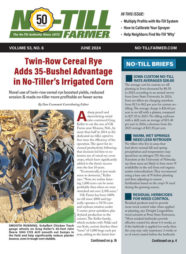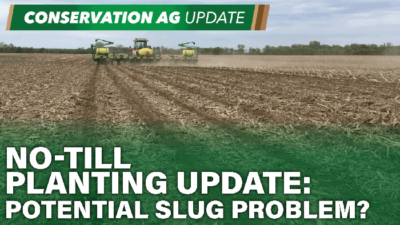Editor's Note: This article written by Jason Johnson of the USDA-NRCS.
As the number of farmers decreases and the average farm size increases, that can mean more conservation on the ground — especially when it’s farmed by environmental stewards like Paul “Butch” Schroeder of Coon Rapids, Iowa.
Schroeder and his brother, David, own, rent and custom farm about 3,000 cropland acres in four counties: Carroll, Guthrie, Audubon and Greene. Each farm ranges from 60 to 400 acres. Schroeder doesn’t hesitate when talking about the ways he and his brother work to conserve the land.
The Schroeder brothers no-till about 60% of their cropland and only lightly disc some poorly draining bottomland and flatland.
Butch Schroeder says reducing soil erosion is his primary goal in no-tilling and practicing conservation tillage. But he says there are cost benefits, too.
“With every field pass, you throw a lot of fuel out there,” he says. “For what it takes to produce a good yield, we have cut back on field passes and fuel usage as much as possible.”
The primary benefits of no-tilling, Butch Schroeder says, are reduced soil erosion and sediment runoff. Schroeder says other benefits he sees from no-till include cutting back on time in the field, less equipment needed, improved water quality and better soil quality.
Farming in four counties on several different slopes and soil types requires adaptability. Five years ago the Schroeders began grid sampling their soils, which proved to be more accurate than the 20-acre samples they previously used.
“We quickly learned where we need to fertilize and where we don’t,” says Butch Schroeder. “There are some soils we don’t even have to apply potash and phosphorus.”
The Schroeders not only manage their residue, but they also apply conservation practices, such as terraces, grassed waterways, field borders, contour buffer strips and filter strips that keep the soil in place, slow runoff and maintain water quality in adjacent streams and water bodies.
“We always plant on the contour regardless of the steepness of slopes,” Schroeder says.
He says he has even talked prospective landlords into retiring highly erodible, damaged cropland into the Conservation Reserve Program (CRP) that he could have farmed as a tenant.
“There is no reason to farm the land if it’s in such poor condition that you can’t make money,” he says.
Schroeder has a handful of CRP contracts of his own, including one that covers approximately 60 acres near his home.






Post a comment
Report Abusive Comment